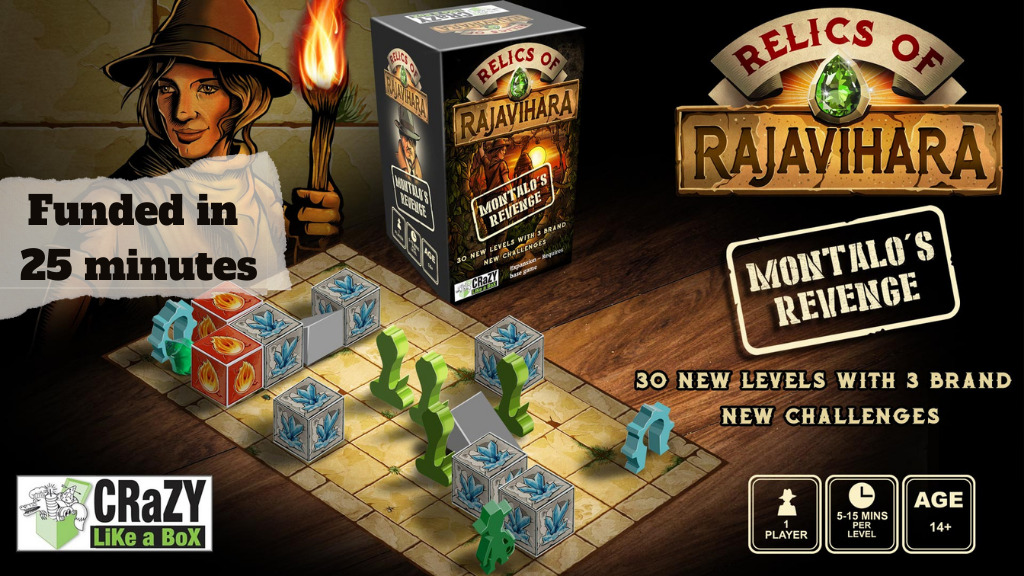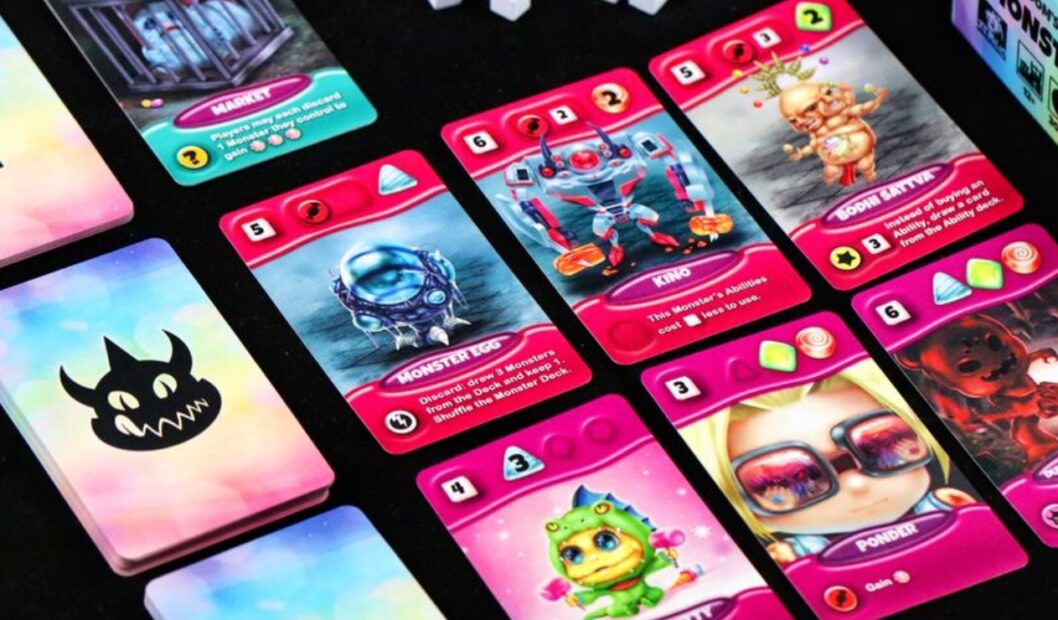Hey there. It’s Joe Slack from the Board Game Design Course. The Fulfillrite team was kind enough to ask me to write a guest post on how to know your game is ready for Kickstarter. Of course, I was completely on board!
After having run 3 Kickstarter campaigns (2 successes following 1 failure) and having studied what it takes to be successful on Kickstarter, I wanted to share my top 3 signs that you’re ready to launch.
If you’re looking to self-publish your game, consider this a checklist of all the things you’ll want to have in place well before you hit that launch button.
#1: Your Board Game is Amazing
If your goal is to successfully Kickstart your game, the first thing you need to ensure is that your game is amazing and that people really enjoy playing it (and want to come back for more).
There is a lot of competition in the board game world, with thousands of games being launched on Kickstarter every year (4,490 in 2020 and 2,439 in the first half of 2021 alone!). So, your game has to stand out. It has to be interesting and innovative. It has to do something different than all the other games on the market.
Your game has to be amazing enough to make people want to back your campaign over all the others out there. People have a limited amount of disposable income and only so much they can allocate to board games, so your game has to really stand out. It’s not enough to have just a “good” game.
When you playtest your game with other designers and players, you’ll often receive a lot of feedback. Quite often it will be necessary criticism that you need to hear in order to identify problems with your game and make it the best it can be.

Often, other designers will give you feedback that would change the game more into the game that they would have designed or would have liked to play, so you have to watch for this.
But when players only have suggestions on how to make small changes that would make the game slightly different, but not necessarily better, take note of this. If this is the only feedback you’re consistently receiving and there are no major problems being identified and no suggestions for improving your game, this is a great sign.
But there are certainly other signs and signals that players give you that will boost your confidence as well.
“Can we play again?”
This is like music to a game designer’s ears.
While this won’t happen with every game, particularly longer games that you wouldn’t normally play multiple times in a row, with a shorter game, this is something you want to hear from your players. If one player has just tasted defeat, they may want a re-match. If it’s a co-op game and the players narrowly lost, they may want another chance at redemption.
If your game is a bit on the longer side, what you might hear instead is players discussing strategy and what they would do the next time they play. They’ve found some depth to your game and have indicated they are interested in playing again in the future.
Even better, if players finish playing your game and immediately ask when it will be available, this is a great sign. It’s even better if they say this while playing your game.
They’ve indicated they enjoyed your game and are interested in picking it up when it becomes available.
If your players are consistently asking when your game is coming out, it means there is some demand for it, which is always a great thing!
It’s an amazing feeling when someone is ready to pull out their credit card and buy your game right there on the spot.
If players are asking to buy your game right now, they are putting their money where their mouth is. They’re not just saying they like your game, they are ready to put down their hard-earned cash to get a copy so that they can share this with their friends and family.
If you’re hearing any of these types of comments consistently, you can be confident that there is definitely a demand for your game and that there is something really special about it. At this point, you’ll know that your game is getting close to the stage where you’ll be ready to launch your Kickstarter campaign.
After all, if your game isn’t amazing, then it’s going to be a tough sell.
#2: You Need an Audience
It is so critical to bring your own audience to your Kickstarter campaign. You can’t rely on the hope that “if you build it, they will come.”
Having an amazing game is a great first step, but nobody knows about it, you’re not likely to hit your funding goal. Even an “ok” game with great marketing will do better than an amazing game that nobody knows about. So, you need to build an audience.
The best way to do this is by getting anyone who is interested in your game to sign up to your email list. Whether you’re demoing your game at a convention, talking about it online, or wherever you can, you need to get people to go from interested to a subscriber. You also have to keep them engaged by sharing backstories, art, and interesting facts about your game or game design journey.
Some suggest that about 10-20% of your email subscribers will actually back your game. You want your game to fund quickly so that it gets more attention and draws more people in, so if you can build up your email list to the point where 10-20% of them would make up the funding goal, you’re in a really good position and can be more confident that your project will succeed.
Without a solid number of supporters, you’re not likely to fund (or at least not without a LOT of effort).
Download my free Kickstarter Success Checklist to ensure you’re ready to launch with success!

#3: You’ve Set Your Campaign up for Success
You have an amazing game.
You’ve built up a sizable audience of raving fans.
But you’re not quite there yet. You still need to put everything together so that your campaign page is ready, you can offer pledges and shipping that are accurate for your project, and you can transition to the next steps of manufacturing, shipping, and fulfillment once your campaign ends successfully.
Before the campaign, you’ll want to prepare several other things in advance. These include the following steps:
- Put together a project plan
- Find an artist and graphic designer, then commission some art for your game (or all of it if you’re able)
- Set up your landing page and email service provider
- Promote your game and collect email addresses
- Set up a Facebook group for your game (optional)
- Get manufacturing quotes and decide on a manufacturer
- Record your Kickstarter video or hire this out
- Get prototypes made
- Contact reviewers and influencers and get them to review and promote your game
- Start putting together your Kickstarter page and launch your notification page
- Research and determine your shipping and fulfilment partners
- Finalize your pledge levels, pricing, stretch goals, and funding level
- Determine your launch date and ensure it’s not coinciding with other big launches (and announce your launch date in this spreadsheet as well)
- Get feedback on your Kickstarter page and make improvements
- Run ads leading up to your campaign (optional)
I go even more in-depth on each of these steps in this article on the Board Game Design Course blog.
As you can see, there’s a lot of work that goes into launching a successful Kickstarter campaign. There are a whole lot of things you need to do that are way beyond game design and require a completely different set of skills.
But if you’re willing to put in the effort and ensure your game is ready before you hit launch, you too can have a successful Kickstarter campaign.
If you’re thinking about launching your game on Kickstarter sometime in the future, check out my free Kickstarter Success Checklist. It will give you step-by-step pre-launch steps, a list of important tasks to complete right after you hit launch, and tips on how to keep your campaign going strong.
 Joe Slack is a board game designer, publisher, instructor, and the author of the #1 international best-selling book, The Board Game Designer’s Guide, along with 3 other books on game design. He has taught Game Design and Development at Wilfrid Laurier University and runs the Board Game Design Course, an online course for new game designers. Joe has 4 games published with other publishers (Zoo Year’s Eve, Kingdom’s Candy: Monsters, Four Word Thinking, and King of Indecision) and one self-published game (Relics of Rajavihara) and expansion (Montalo’s Revenge).
Joe Slack is a board game designer, publisher, instructor, and the author of the #1 international best-selling book, The Board Game Designer’s Guide, along with 3 other books on game design. He has taught Game Design and Development at Wilfrid Laurier University and runs the Board Game Design Course, an online course for new game designers. Joe has 4 games published with other publishers (Zoo Year’s Eve, Kingdom’s Candy: Monsters, Four Word Thinking, and King of Indecision) and one self-published game (Relics of Rajavihara) and expansion (Montalo’s Revenge).

